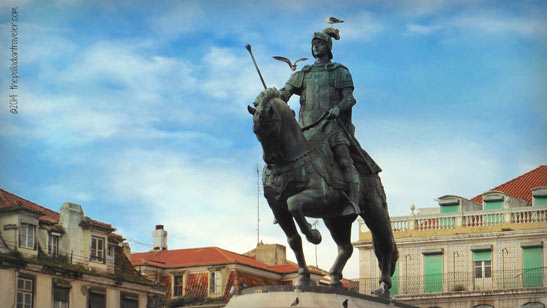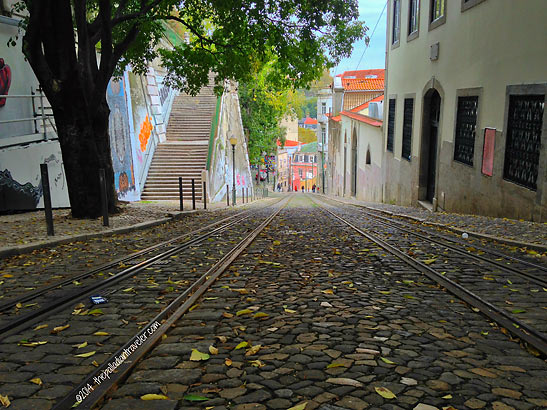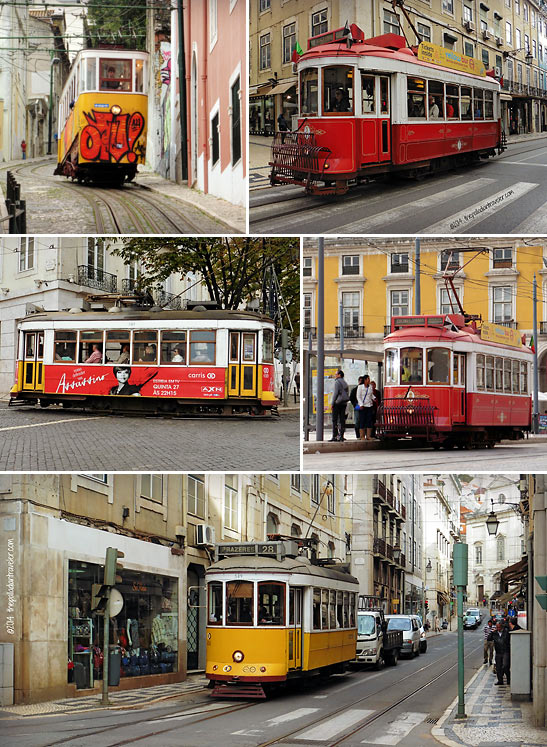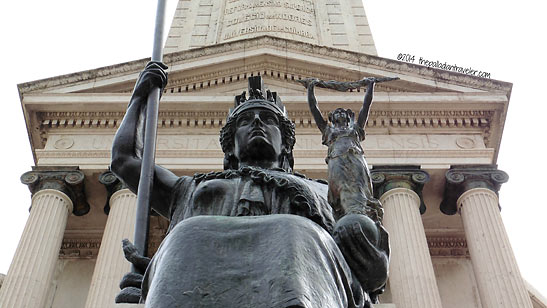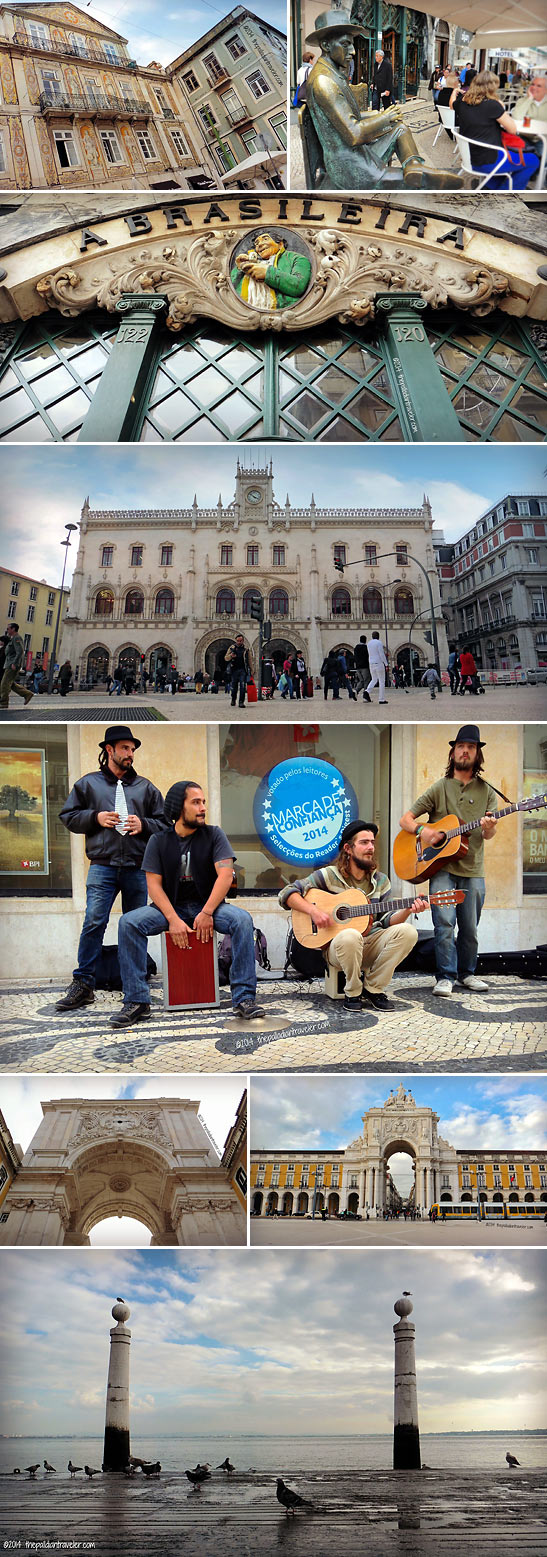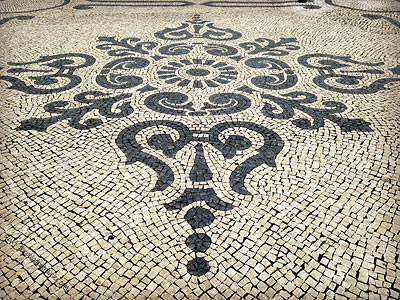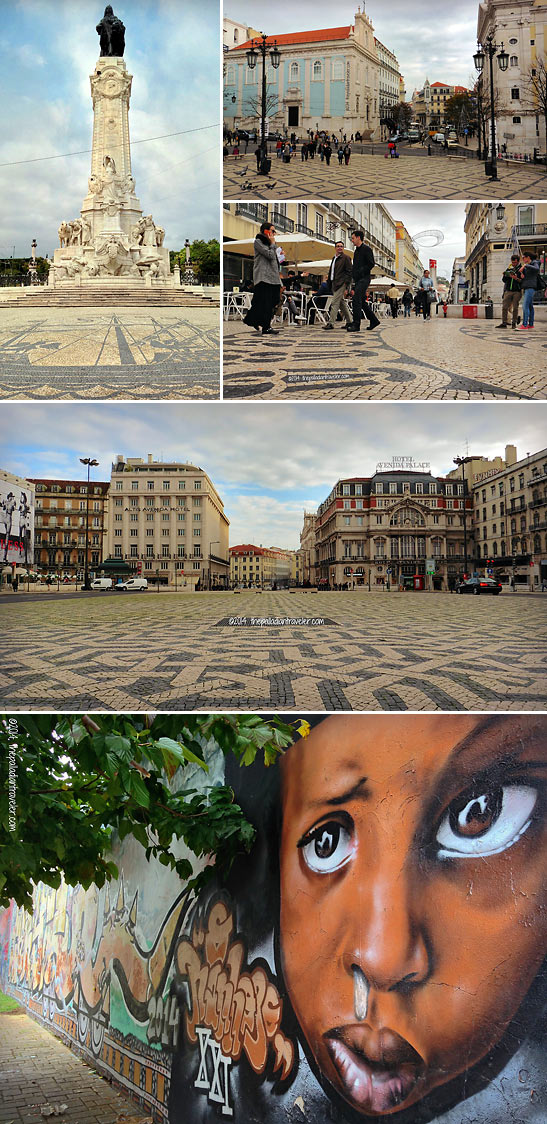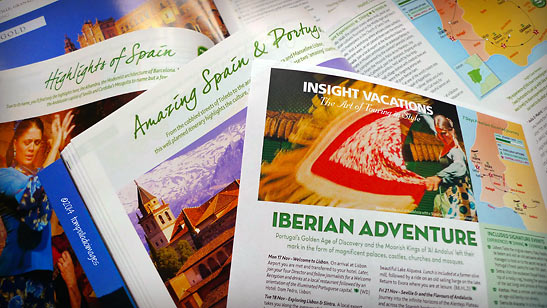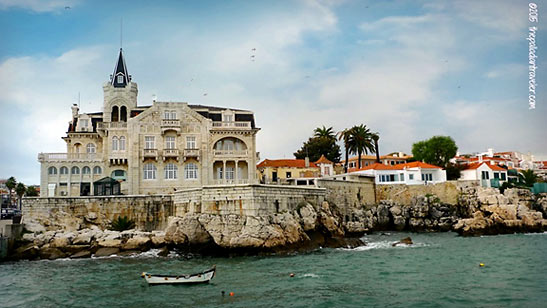 |
 |
|
 |

|
Iberian Adventure:
Walking the Decorative Cobble Of Lisbon (Dispatch #3) Story and photos by Tom Weber
I've plated several for breakfast – okay, three – in the dining room of Lisbon's Dom Pedro Palace, the five-star hotel where I'm staying as a guest travel writer of Insight Vacations (Insight) on its abbreviated, seven-day Iberian Adventure through Portugal and Spain. Hey, when in Lisboa do as the Lisboêtas do, especially when it's on someone else's dime, right?
I'm off the clock until this evening and want to get the most out of the daylight before the rest of Insight's latest "band of merry media," 29 international journalists and photographers, form up for our launch party-dinner. Whaddya say we hit the decorative cobble, remove the old lens cap and frame A Cidade das Sete Colinas (The City of Seven Hills) as fast as we can? VAMOS!
Like some of the other great seven-hill cities of Europe – Athens, Budapest, Prague and Rome, to name a few – Lisbon is spread across seven REALLY steep hills that overlook the Rio Tejo (Tagus River).
The oldest city in Western Europe, predating even the Romans, Lisbon, with its patchwork of undulating neighborhoods, is best experienced on foot, or, when the legs give out, aboard one of the colorful, above-ground classic trams, or historic elevadores (funiculars), or via the four-line, underground metro system. For me, this walk is literally all downhill.
From the hotel, I take Rua Aguiar straight down to the Marquês de Pombal roundabout, veer to the right onto Avenida da Liberade and then start a lengthy zig-zag that takes me up through the Barrio Alto, then back down into the Chiado, Rossio and Baixa neighborhoods where I finish the out-route of this longa caminhada (long walk) at the Praça do Comércio fronting the banks of the Tagus. The only problem that awaits me is the return route. It's all uphill. TAXI!
Nearly leveled by a devastating earthquake and its associated fires and catastrophic tsunami on the morning of November 1, 1775, which took the lives of an estimated 90,000 victims out of a total population of 250,000, Lisbon miraculously picked itself up off the rubble and immediately rebuilt wider, sturdier and more beautiful than ever. One glance down at the pavement underfoot and you'll understand why. It's calçada portuguesa, the decorative mosaic stone pavement painstakingly laid down by hand that covers the walkways, alleyways and squares around the historic center of this recognized global city.
On the surface, Lisbon appears somewhat gritty, rough around the edges with its fair share of colorful street art sprinkled here, there and everywhere. But, underneath all the wear and tear, the Queen of the Sea, sitting atop seven hills for all to admire, is quite an elegant, sophisticated metropolis.
Wide leafy avenues and sun-drenched squares frame this postcard-perfect city of reasonable prices and friendly, laid-back people. Lisbon is, without a doubt, one of Europe's most atmospheric and lively locales and a must-see destination.
For complete information on Insight's premium and luxury-escorted itineraries, including the Iberian Adventure and 112 other journeys throughout Europe, just click HERE, or call toll free 1-888-680-1241, or contact your travel agent.
See you tomorrow morning when we climb aboard the Insight motor coach and cruise on over to Lisbon's Belém neighborhood followed by Cascais and Sintra. Boa noite! Related Articles:
|
|
Feedback for Destination Bosnia: Inside Sarajevo's Tunnel of Hope Spent time in Sarajevo in the fall of 1973…beer was excellent! --- David * * * * Hi Tom, I must say, you're photographs are always amazing. They are top notch. You bring so much class to Traveling Boy. It's photographs like yours that make me want to go out and do my own traveling. Please don't get tired of sending us your amazing adventures. It's such a delight for the soul. --- Raoul, Whittier, CA * * * * Hi Tom: --- David * * * * Hey Tom – Wow! Love those photos – they are so super that they make me A) Want to start eating NOW. B) Go there myself. C) See all that pristine beauty that looks so restful and peaceful. Great story, superb pix!!! Bravo!! --- John, Los Angeles, CA * * * * Feedback for Destination Southwestern France: Saint-Émilion Good job, Tom, and timely info. St. Émilion is in the list of places Jim Hayes and I will visit in September 2014. If we get the chance, we will exploit your experience to enhance the trip! --- Bobby Harper, Dameron, MD * * * * Feedback for Vicenza Walks – Monte Berico I lived in Vicenza for 4 years in the U.S. ARMY from 1963 to 1967. A wonderful place to explore. Palladio’s works are amazing. Have been back twice since and find new places to visit. My favorite is MONTE BERICO where I have some wonderful photos of my family. --- Dr. Albert Pizzi, Hanover, MA * * * * I liked the new TB particularly the Vicenza article that took me back as a youth when we lived in Naples and travelled up there for a baseball tourney (U.S. Military Bases dependent schools played each other.) Took me back to the plaza. --- Bill Feedback for A Canterbury Trail (Sutri) Very interesting note. I have wedroned which route the early pre-Christian and Christian pilgrims travelled to Rome from England. Is it still possible to travel the Francigena trail? --- Pawel You can find out more info on walking tours of Via Francigena at this site: http://www.compagniadeicammini.it/en/. Thanks for stopping by and commenting.. Tom * * * * Good article, enjoyed reading it. Saved your recommended sights for future use. --- Dardenne Prairie, MO * * * * You're going to be great at this Tom. Congrats. --- Donna Vissa -Montreal
|
This site is designed and maintained by WYNK Marketing. Send all technical issues to: support@wynkmarketing.com

|







